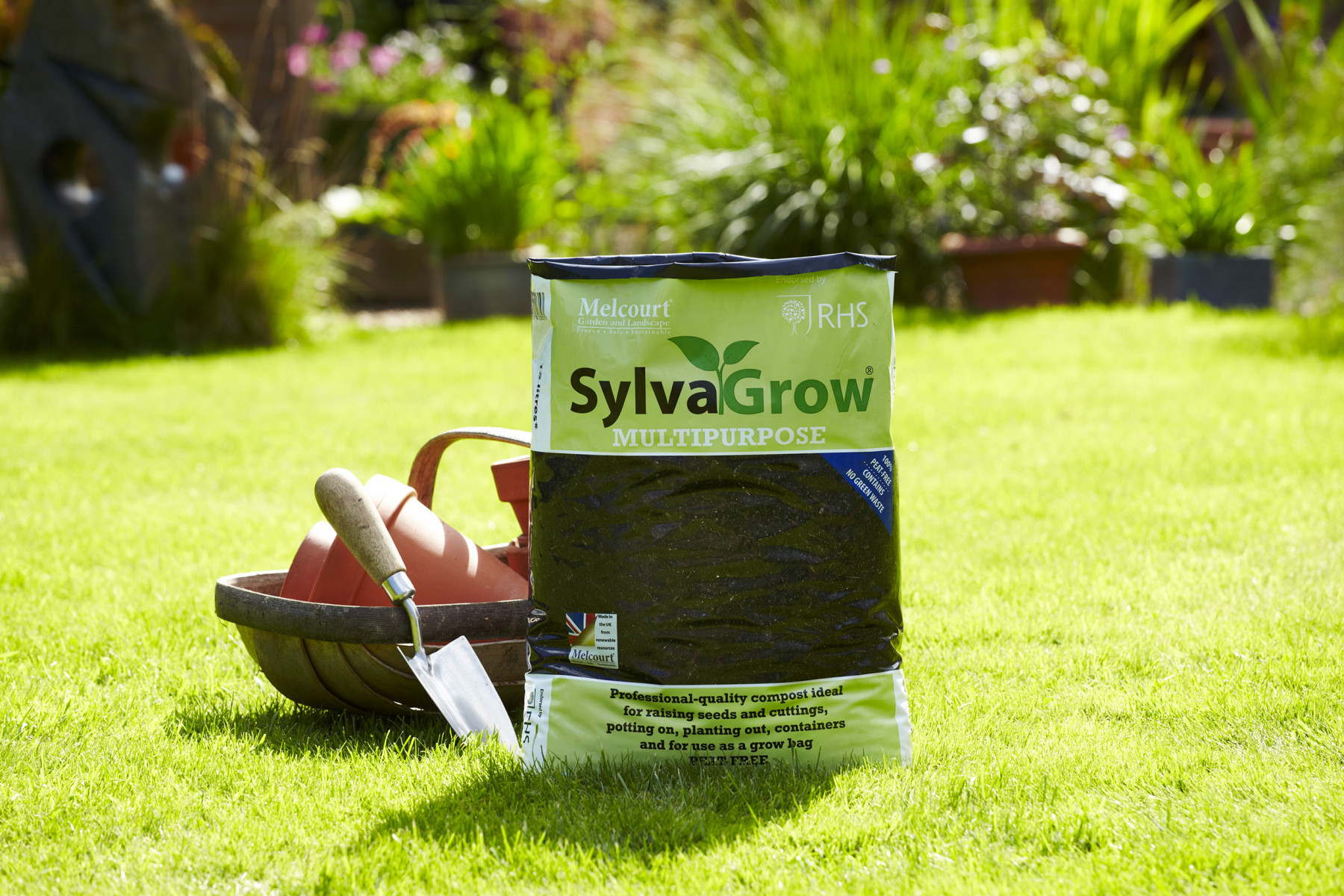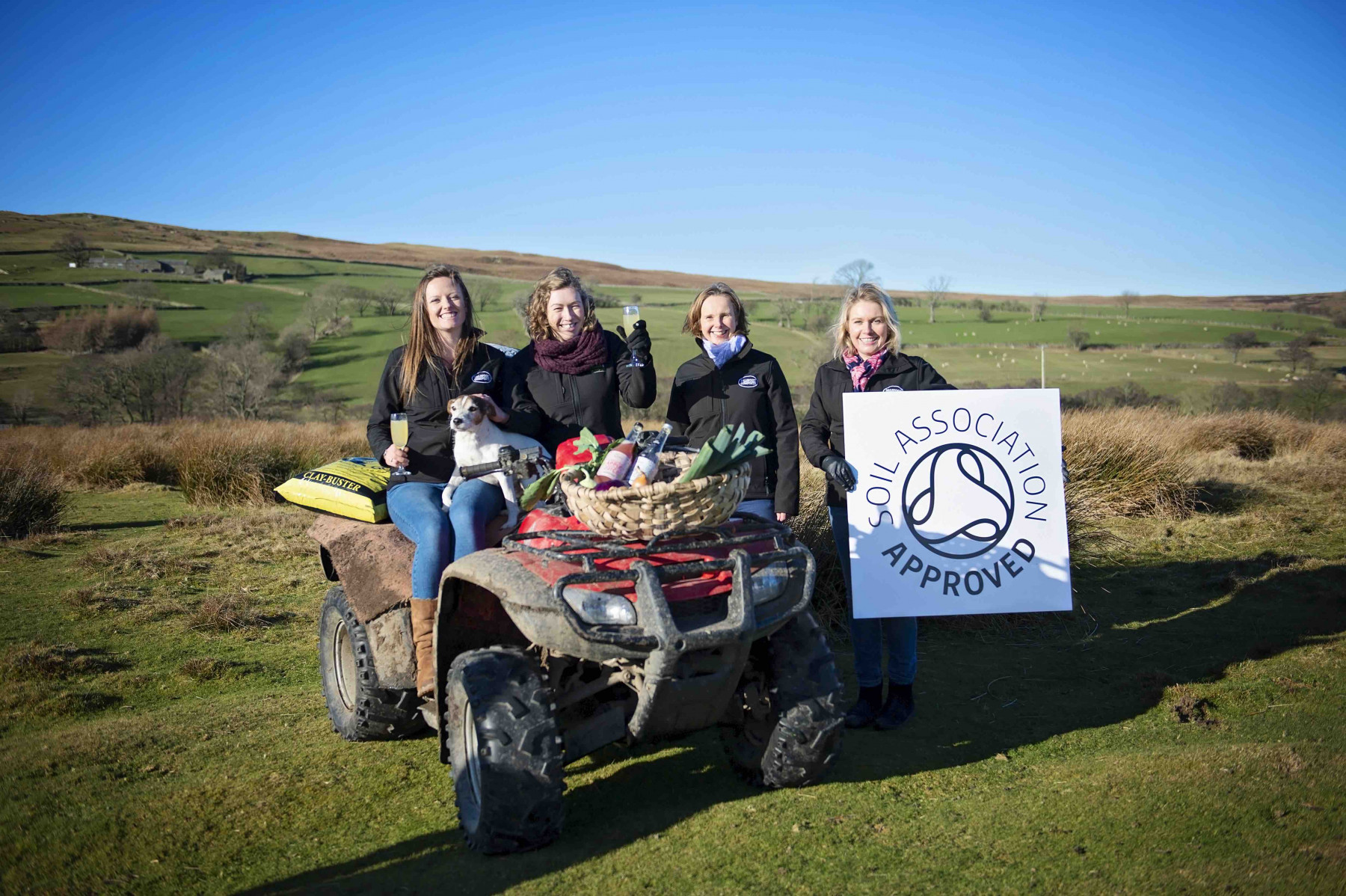
Every greenhouse gardener needs a good compost in order to raise seeds and plants, but in recent years it’s been very difficult to find a good compost that’s consistent in quality. Historically price mattered more than anything else, so it was quite possible to buy a good bag of something one week and then get a duff bag next time because the makers had altered the recipe because one ingredient had gone up in price. This is the reason why compost Ingredients rarely listed on packets of compost, because recipes change in order to keep the price down. Those 3 for £10 bargain offers often proved problematic because your seeds wouldn’t germinate. Good compost costs more and it needs storing undercover, away for strong sunshine and heavy rain.
Peat has been the staple ingredient in the past, but extracting peat in vast amounts is harmful to the landscape and the environment. It’s contentious, because some believe we should be able to carry on using peat despite all that. I’ve never been a peat fan, because I used to have a very dry garden that got less than twenty inches of rain a year. If I planted anything grown in peat-rich compost the peat would dry up into a tight ball and the plant would die. Peat is almost impossible to rehydrate once it gets dry. Loam-based compost, based on the John Innes recipes, is not what it was either. It often contains peat these days because good quality loam is in short supply.
Whatever your thoughts on peat, the government is going to ban the sale of peat-based composts to home gardeners from 2024 (subject to confirmation) and it’s been a long-time coming. Commercial horticulture will have to stop using peat by 2030. The driving force behind this ban is climate change, because the world’s climate has changed enormously within the last twenty years. We’re getting more extreme weather events, caused by global warming, so it’s vital to remove as much carbon from the atmosphere as possible. Peat bogs store more carbon than any other landscape, so the hope is that these carbon sinks will slow down global warming, because the RSPB tell us that “the UK’s peatlands store three times as much carbon as its forests.”
Although there’s been resistance to banning peat, there are plenty of excellent peat-free composts available, consisting of sustainable materials such as wood fibre, coir and bracken, among others. Compost producers, ones that used to rely heavily on peat extraction, have also taken up the peat-free baton – if a little reluctantly.
B & Q were ahead of the game when it came to peat-free composts. They were among the first to promote peat-free products and they specify the amount of peat contained in brands sold by them. This helps gardeners to choose accordingly. B & Q’s easyGrow bedding plants are now grown in peat-free and they sell peat-free compost at the same price as other composts. They no longer sell 100% peat compost.
Leading charities have also led the way. The RHS are already 98% peat-free and The National Trust are using coir plant plugs to raise their plants. A lot of famous nurseries are successfully raising plants in peat-free compost. Hardy’s Cottage Plants – www.hardysplants.co.uk, use Melcourt SylvaGrow (see below).
The government has allocated £50m in May 2021 for the restoration of 35,000 hectares of UK peatland, around 1 per cent of the total. Ten per cent of the UK land area, nearly three million hectares, is peat bog, so there’s a long way to go. The RSPB tell us that “peatlands are our biggest terrestrial carbon store and home to some of our rarest species…. But only 13% of our peatlands are in a near-natural state due to damage and degradation.” Our peatlands are actually emitting 10m tonnes of CO2 per year in England instead, so they’re adding to the problem.
Stopping peat extraction is one of the ways to help our planet and future generations, for climate change is the biggest challenge we face across the world. Going peat-free, with good grace, will make a difference.
Some Peat-free Composts

Dalefoot Composts, made from natural sheep’s wool and sustainably-harvested bracken, are totally peat free. They’ve just been officially approved for organic growing by the Soil Association. I’ve used them for many a year and my top tip is to push your finger into the compost to assess whether it needs watering or not. It’s a deep-brown in colour and it holds more water due to the wool content, so it’s not always easy to tell if water is needed. Overwatering seeds and small plants will lead to certain death. This compost, which has a similar texture to peat, feeds plants for longer in my experience as well.
Sheep’s wool comes from Dalefoot’s own flock and the Herdwick ‘wool-clip’ of neighbouring hill farmers, whilst bracken is harvested sustainably from the surrounding Lake District fells. Harvesting bracken on rotation, at exactly the right time of year, improves the habitat for ground nesting birds and butterflies, in particular the endangered High Brown Fritillary. Environmental scientist Professor Jane Barker and her husband, fifth-generation farmer Simon Bland, started making compost from the natural ingredients found around their Cumbrian farm 21 years ago, inspired by early 20th century gardening books. The couple also run one of the UK’s leading peat bog restoration contractors, restoring peatlands for organisations such as Natural England, local wildlife trusts and Scottish Natural Heritage. One million tonnes of carbon have already been saved.
Prices range from £7.99 – £11.99 per bag, but prices get lower as more bags are bought in quantity via the internet. www.dalefootcomposts.co.uk lists stockists by region. You might want to group together and get a load
Melcourt SylvaGrow is used by lots of growers and gardeners and it’s RHS endorsed. It’s made from wood fibre and a blend of fine bark, a by-product of sustainably managed British forests, carefully-sourced green compost and coir. It comes in various forms, including Multipurpose, Tub and Basket, Added John Innes and one for Organic growing. This Soil Association have approved the Sylvagrow Organic growbag containing balanced organic fertilizers and seaweed meal for excellent vigour and disease resistance.
Plants raised in SylvaGrow should be fed with a liquid fed every 3 or 4 weeks, possibly because the wood fibre carries on decomposing. If you want to avoid green waste, which may well contain chemical residues, opt for SylvaGrow Sustainable instead. Melcourt also supply high quality bark chippings and mulches. They are part of the Responsible Sourcing of Growing Media Scheme, a widespread initiative that includes charities such as the RSPB, Defra, The Horticultural Trades Association, the RHS. B & Q and Homebase.
https://www.melcourt.co.uk/responsible-sourcing-of-growing-media-scheme/
50L bags cost £6.50 and this is stocked widely because it’s easy to work with. www.melcourt.co.uk
Westland’s Organic and Peat Free New Horizon contain Westland’s patented BIO3 technology, a natural peat replacement material, which provides the perfect structure for root establishment, nutrient availability for plant health and water availability for growth.
The largest compost supplier in this country, Westland are producing a peat-free New Horizon range that includes All Plant Compost, All Vegetable Compost and Tomato Planter. Break it up with your hands before using. All the products in the New Horizon range and prices are typically £6.99 for 60L.
You can also make your own compost using
a 50:50 mix of finely sieved garden compost and two-to-three-year-old leafmould, although there is no such thing as weed-seed-free garden compost or leafmould.
This recipe works and has a zero footprint. You can always top dress with a commercial compost, to discourage weed seeds etc.
Happy growing!



